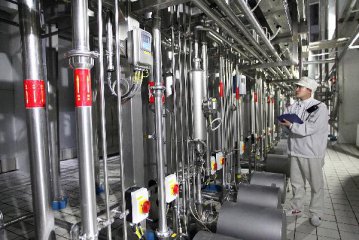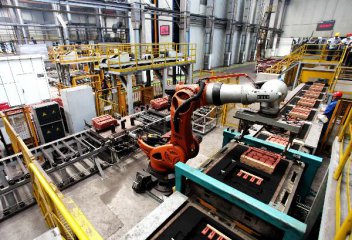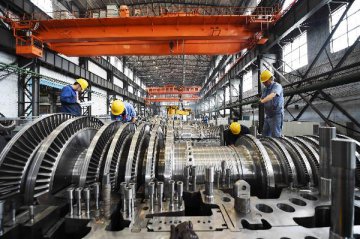
The rebound in both China's official PMI and Caixin PMI in March were partly attributed to seasonal effect, and also benefited from two factors including improving demand and stabilized market sentiment, according to a report from Singapore's OCBC bank on Friday.
The official PMI rose back to the expansion territory at 50.2 from 49, for the first time since August 2015 while Caixin PMI also spiked to 49.7 from 48, according to latest figures from China's Statistics Bureau.
According to the OCBC report, analysts from the bank have partly attributed the rebound in PMI to seasonal effect. "Although PMI is seasonally adjusted in theory, the historical pattern shows that the March reading is always higher than February reading without fail since the birth of PMI data in 2005 as shown on the chart below.
This is probably due to lunar New Year effect. In addition to usual seasonal distortion, OCBC noted the rebound of PMI also benefited from two factors including improving demand and stabilized market sentiment. In March, the benchmark Shanghai index rose by more than 11 percent while Shenzhen index rebounded by more than 16 percent.
Commodity prices ranging from Iron Ore and Copper continued to climb up. More importantly, RMB stabilized after volatile start of the New Year with the U.S. dollar slipped back to 6.40 era. OCBC said the improving sentiment in financial market as well as stabilization in RMB helped calmed down the fragile sentiment of manufacturers.
The sign of recovery in manufacturing sector were also recorded. "China's industrial profit rebounded by 4.8 percent in the first two months of 2016, ending seven-month decline. Despite the on-going stress in the upstream industry, industry profit in the downstream industry started to recover.
Profit for manufacturers rebounded by 12.9 percent in the first two months, lending positive sentiment to PMI," the bank noted. Looking ahead, with both new orders and new export orders went back to above 50, and input prices rebounded sharply to 55.3 in March, OCBC expects the contraction of producer prices to narrow further in March to -4.7 percent from -4.9 percent.
In the meantime, the global trade outlook remains murky due to the structural change in global value chain and rising protectionism. And although the correction of U.S. dollar in March after G20 meeting supported the global sentiment, the upside risk for dollar cannot be ruled out given the Fed is still on track to raise its interest rate as early as in June.
























Latest comments